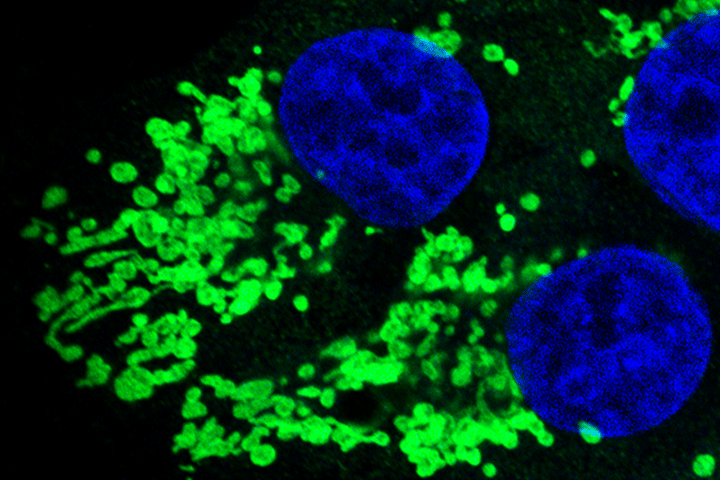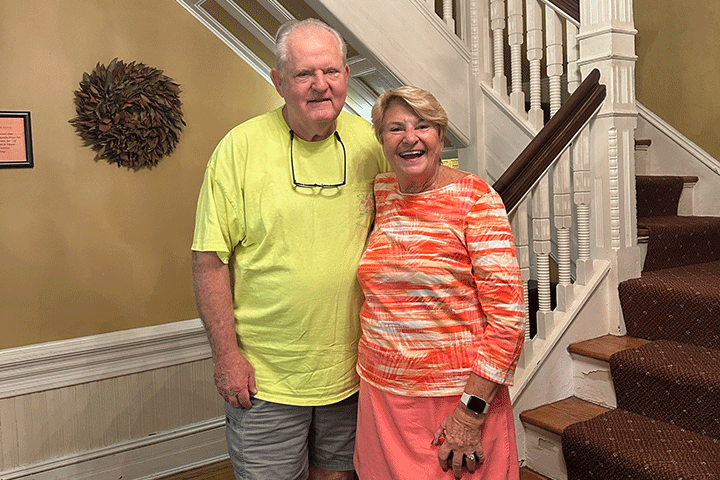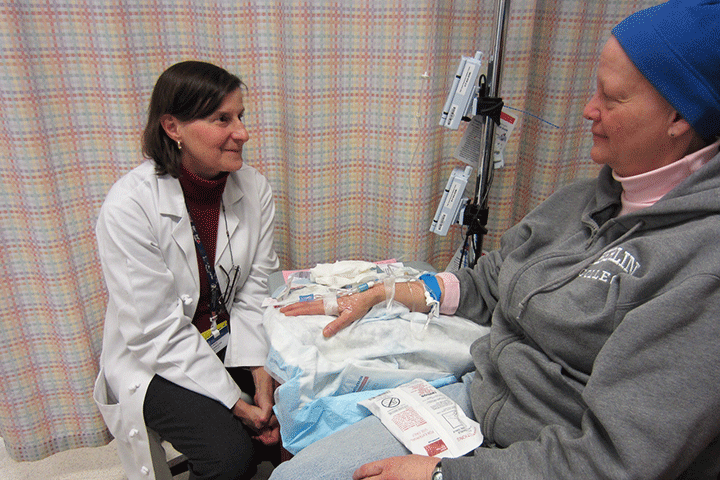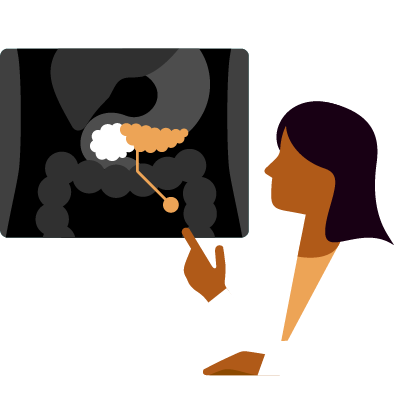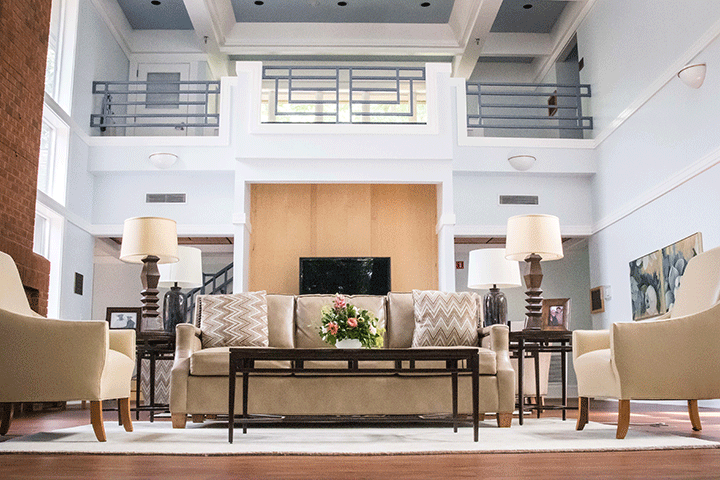From Caregiver to Nurse, Overnight
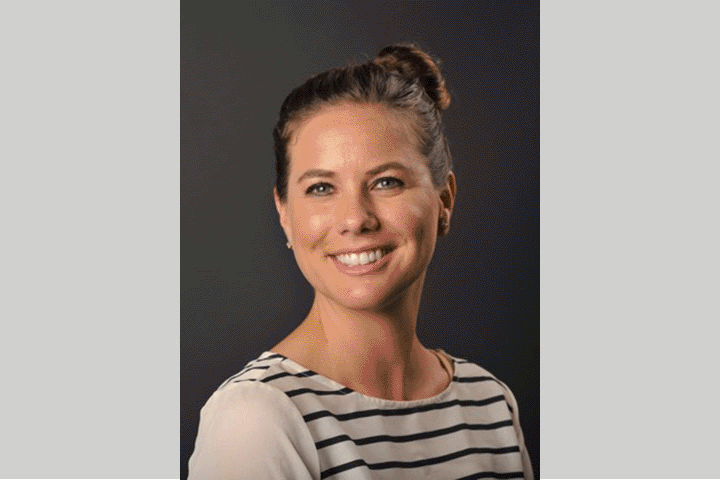
While chemotherapy may be administered in an infusion center or oncology ward, it doesn’t stay there. It comes home with the patient—in their bodies, and in the waste they produce.
Nurses are masked, gloved, and gowned to shield themselves from the toxic agents powerful enough to kill cancer cells, and spend years learning to handle these hazardous materials safely and to minimize exposure risks for themselves and those around them.
Meanwhile, caregivers—spouses, children, parents, and friends—are given a quick crash course, a few printed pages, and a verbal rundown before being sent home with the enormous responsibility of caring for someone undergoing chemotherapy. They’re asked to manage medications, clean up bodily fluids, dispose of contaminated materials, and protect themselves—often without the equipment or thorough training that professionals rely on.
Caring for the Patient
Marci Andrejko, a nurse practitioner at Memorial Sloan Kettering Cancer Center (New York, New York) has spent years as both an oncology and a clinical research nurse. She also focused on the safe handling of hazardous drugs for her Doctor of Nursing Practice dissertation, and advises patients and their caregivers on how to apply some of these professional practices at home.
“The transition from getting full medical support in the hospital to providing that support at home can place a big burden on caregivers,” she says. “They get a rapid nursing education, and are sent on their way.”
In most cases, patients are sent home with a chemo clean-up spill kit, as well as a central line emergency kit, to help ensure their central line is kept clean. Patients are also provided with supplies for routine central line care, for example for taking showers or bathing. But they should also stock up on other supplies, such as hazardous drug-grade gloves and hospital-grade cleaning supplies, if possible.
As a caregiver, you should do whatever you can to protect the patient, who may be immunocompromised—by wearing masks, practicing safe food handling and diligent hygiene, and avoiding any other activities that might introduce infection. Patients should not clean up after animals, for example, or do the gardening, as spores in the soil could make them ill.
Protecting Yourself and Your Family
The patient isn’t the only one needing special care. You and your family also require protection.
In order to avoid any chemo contamination around the house, especially within the first 48 hours after treatment, the patient should use a dedicated bathroom if possible. If that is not feasible, patients should shut the lid and flush twice every time they use the toilet, even when urinating. It is also important to disinfect the toilet seat and rim with sanitizing wipes after use. And of course patients should wash their hands with soap and water before touching other surfaces. At the end of the 48 hours, the toilet and bathroom floors should be cleaned.
To prevent contamination with chemo drugs coming out of patients’ pores, patients may also want to change and wash their clothes and shower immediately after chemo. Bed linens can also become contaminated with chemo drugs the same way, so changing bed linens daily is recommended in the immediate days after chemo. Linens, clothes, and towels can be handled as usual unless they are directly contaminated by chemotherapy drugs or bodily fluids. In that case the items should be laundered separately, and washed with detergent twice in hot water.
Experts suggest refraining from sexual intercourse for the first 48 hours after chemo treatment because of possible chemo residual in male and female bodily fluids. Andrejko also strongly advises using condoms or other forms of barrier contraception for the first 48 hours, for the same reason.
More Challenges for Caregivers
Caregivers face other challenges beyond maintaining a safe, clean place for recovery. Ensuring patients are fed and hydrated can be a gargantuan task—and a frustrating one. They may cook their loved one’s favorite meal, only to be rejected because the patient suddenly can’t stand the smell.
“I had one person tell me she cooked 10 meals one day, only to have each one rejected. Her partner was losing weight while she was gaining weight from eating all the food she cooked for him,” Andrejko adds. “You have to give each other grace, because you never know what each day will bring.”
Caregivers are also the patient’s strongest advocates, and Andrejko says they should not be afraid to speak up and ask questions when meeting with their loved one’s medical team.
“No question is a dumb question,” Andrejko notes. “I tell people to keep a pen and paper on the bedside table to write down any questions that might come to them, so that it doesn’t keep them up at night and they don’t forget in the morning.”
Caregivers must also remember to care for themselves. It’s not a sign of weakness to ask for help, she says. “Taking time to rest, recharge, and seek assistance when needed isn’t selfish; it’s essential—both for your own health and for the well-being of the person you’re supporting.”
Modern cancer care would not be possible without these at-home heroes, Andrejko adds. “These caregivers deserve honorary nursing degrees. We have so much to thank them for—without them, we wouldn’t be able to do what we do.”
